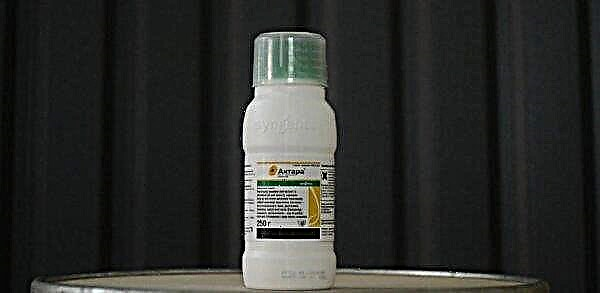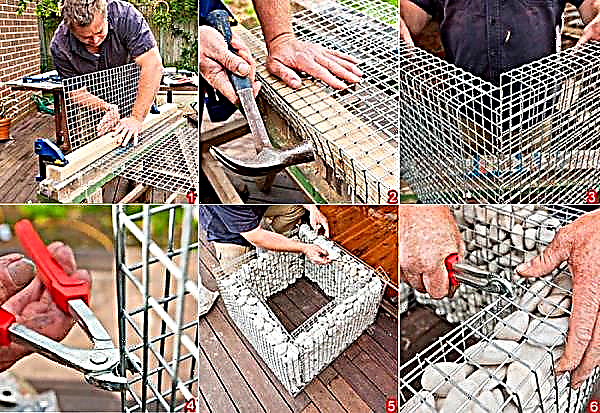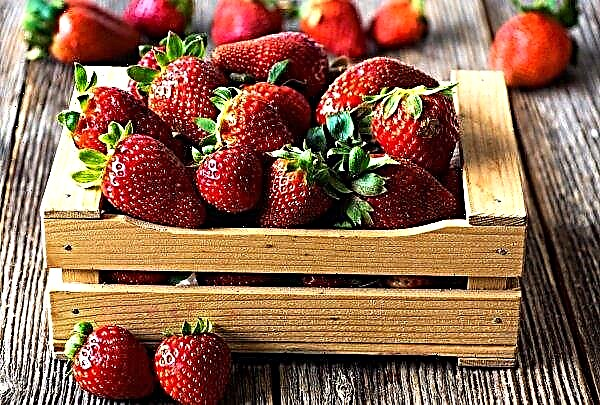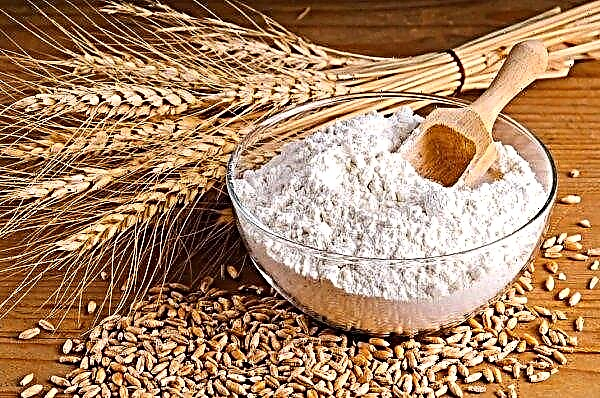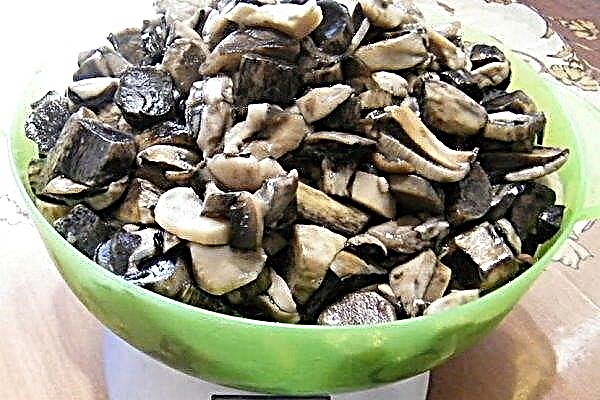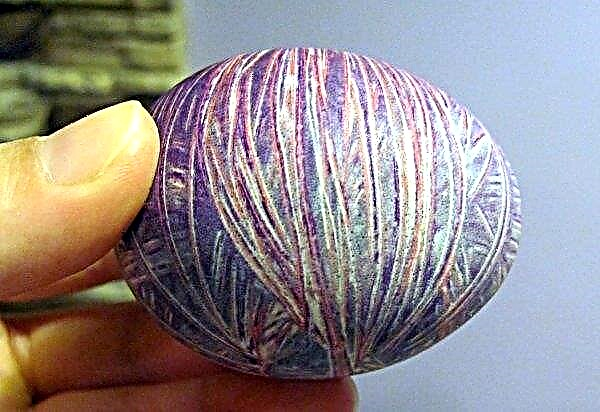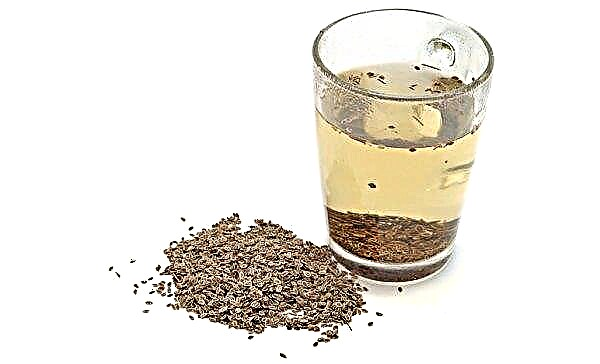There are many criteria by which gardeners choose tomato varieties for growing in their own summer cottage. However, those species that can please their owners with the earliest possible harvest are of particular value, because at the beginning of summer fresh vegetables are very expensive on the market, and you really want to enjoy them after a long winter. These characteristics are possessed by the new Dutch tomato hybrid called Polbig f1. How to grow it in the open ground and what kind of crop you can count on is described in this review.
Grade description
Tomato Polbig f1, according to information from the manufacturer and reviews of gardeners with experience in growing it, meets the following characteristics:
| Type of bush | Determinant, in height reaches no more than 86 cm. |
| Bush structure | Compact, branching and leafy moderate, the leaves are dark green, large, standard in shape, the inflorescence is simple. |
| The number of fruits in the inflorescence | Six to eight. |
| Fruit | Rounded, slightly flattened and ribbed, at the stage of formation light green, mature bright red, the skin is dense, with a beautiful sheen, the flesh is pink, dense, the juiciness is medium. |
| Fruit Sizes | Large, about 200 g in open ground and up to 130 g under the film. |
| Ripening period | Declared by the manufacturer - 70 days, according to reviews of gardeners - 95-110 days from the time of emergence of seedlings (applies to extra early). |
| Productivity | 3.5-4.5 kg from one bush. |
| Growing method | Preferably in the open field, although suitable for greenhouses. |
| Fruit Prescription | For fresh consumption or preparation of workpieces involving crushing or squeezing juice (pasta, lecho, sauces, ketchup, etc.). |
Did you know? The Netherlands, along with Spain and Mexico, are the world leader in tomato production. But the main importers of this culture are the USA, Germany, Great Britain, France, Poland and Russia, the latter mainly buying tomatoes in Turkey, providing this country with more than 60% of exports.
Photo gallery
Advantages and disadvantages
Tomato Polbig f1 has a number of undeniable advantages, although the hybrid also has obvious disadvantages.
- The advantages of the species include:
- unpretentiousness;
- cold resistance;
- high productivity, including at low temperatures;
- excellent seed germination and lack of need for their pre-sowing treatment;
- wide geographic range for cultivation (in particular, suitable even for the northern regions of Russia);
- friendly ripening;
- early maturity and, as a result, the high cost of fruits (because of this quality, farmers are very fond of hybrid);
- good fruit keeping and transportability (dense skin is not subject to cracking);
- the external attractiveness of the fruit (the same size, beautiful gloss);
- resistance to the most common fungal infections, in particular, fusariosis, alternariosis, macrosporiosis, verticillosis, late blight.
- Speaking about the minuses of the hybrid, they usually distinguish:
- the need for self-growing seedlings (when sowing in open ground, the hybrid dramatically loses its germination);
- mediocre taste of fruits, low content of vitamins and other nutrients in them (typical of all early ripe vegetables);
- limited bush growth, if necessary, to carry out mandatory garter (typical for all large-fruited determinant tomatoes);
- short term fruiting period;
- the impossibility of growing from seeds collected from last year's crop and the need to buy new seed material every time;
- the high cost of seeds (a bag weighing 5 g costs about 10 euros).
When analyzing the two lists above, it is clearly seen that all the shortcomings of the hybrid are not the result of a shortage of Dutch breeders, but are a kind of payment for the high commodity indicators that are inherent in this tomato.
How to grow tomato seedlings yourself
Having decided to plant an expensive hybrid from the Netherlands on your site, you need to come to terms with the fact that seedlings of such a tomato will need to be grown independently. Since it is impossible to determine the plant's variety by the appearance of the young bush, seedlings of valuable hybrids are rarely grown for sale, and after finding such a product on the market, you can never be sure that the plant meets the declared characteristics.
Optimum timing for sowing
Tomato seedlings should never be rushed.
Depending on the climatic zone, seeds need to be sown between the beginning of March and the beginning of April, in such a way that on average about two months remain before the bushes are transplanted into the open ground. You should always remember that tomatoes sprout and develop much faster than other representatives of solanaceous (for example, eggplant, sweet and bitter peppers), therefore tomatoes need to be planted about 2-3 weeks later than other vegetables.Important! Too small bushes, once in open ground, will form and gain strength quickly enough, but overgrown seedlings, on the contrary, take root very hard.
The soil
Choosing the soil for seedlings, you can act in two ways, each of which has its own advantages and disadvantages:
- buy a ready-made substrate for seedlings;
- independently prepare the soil mixture.
Video: Soil for seedlings
However, gardeners note that seedlings in the open ground take root much better if the seeds were sown in soil similar to where the adult plant will be. From this point of view, it is better to prepare the soil mixture yourself. For the Polbig f1 hybrid, a substrate made up of a mixture in equal parts of only two components — garden soil and peat — is suitable.
The prepared soil mixture must be decontaminated. There are three possible methods for this:Did you know? The smallest tomatoes in the world today are grown by an Israeli company called Kedma. In size, these fruits are smaller than the local coin of one shekel (15 mm), and in color can be red or yellow. It is interesting that this tomato was not bred in Israel at all, but in the Netherlands, but the Dutch worked hard to adapt their creation to the hot and dry climate of the Promised Land.
- Freezing It is carried out in several stages. First, the tank with soil is carried out in a strong (at least -10 ° C) frost for 10-12 hours, then it returns to a warm room and is left for the same time. It is necessary that all pests in the soil, having got into heat after frost, “perceive” such a change as the arrival of spring and come out of hibernation. Then the substrate is again taken out in the cold, where it is aged for at least a day. During this time, the harmful microflora in its majority should die. To secure, you can repeat the procedure several times.
- Calcination. The substrate for seedlings spills out onto a baking sheet and leaves for several hours in an oven preheated to +70 ° С. It is not recommended to use a higher temperature, since too hot air can destroy not only harmful, but also beneficial microorganisms.
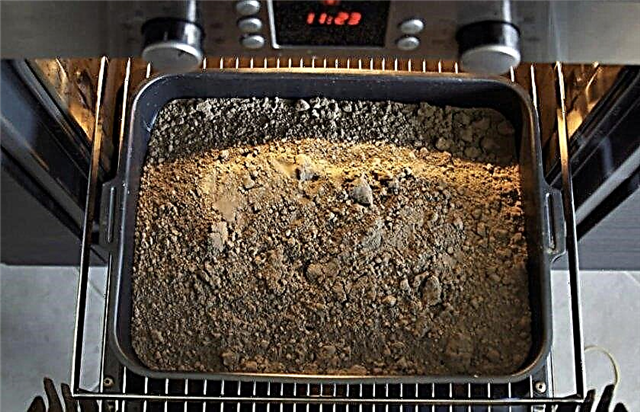
- Disinfectant solution. As such an antiseptic, a weak solution of potassium permanganate is usually used. The soil mixture is abundantly watered with them, after which you just need to let the liquid evaporate.
Capacity for growing
There are several types of containers for growing seedlings. For these purposes can be used:
- shallow boxes, boxes or other similar containers;
- one-time cups;
- special cassettes for seedlings;
- peat tablets.
 Cassettes with holes for drainage of excess moisture Seeds of the Dutch hybrid Polbig f1 are very good germinating ability, so when planting them in seedlings it is most convenient to use ready-made cassettes, placing one seed in each cell. In that case, during subsequent diving of the sprouts into a larger container (for the normal formation of the root system, young tomatoes need about 30 cubic centimeters of soil layer at the last stages of seedling cultivation), the plant will not be at risk of damage to the delicate root system, since it will be possible to carry out the movement together with earthen lumpy.
Cassettes with holes for drainage of excess moisture Seeds of the Dutch hybrid Polbig f1 are very good germinating ability, so when planting them in seedlings it is most convenient to use ready-made cassettes, placing one seed in each cell. In that case, during subsequent diving of the sprouts into a larger container (for the normal formation of the root system, young tomatoes need about 30 cubic centimeters of soil layer at the last stages of seedling cultivation), the plant will not be at risk of damage to the delicate root system, since it will be possible to carry out the movement together with earthen lumpy.Seed preparation
The agricultural technique of growing seedlings of most varietal tomatoes and many hybrids involves serious preparatory work with seeds - sorting, soaking in growth stimulants, dressing, hardening. Polybig f1 does not need such procedures.
Taking into account the high cost of seeds and the reputation of their producer, specimens that do not preserve a living embryo are also selected at the packaging stage, therefore, with maximum probability, each seed will form a full-fledged plant without any additional preparation. Moreover, any disinfecting, nourishing and hardening procedures can only harm the seed material by supersaturating it with additional substances, which was not planned by the manufacturer.Important! The manufacturing company, the Bejo Zaden company, launches hybrid tomato seed production, which has undergone a complete pre-sowing treatment. Such seeds are planted dry in the ground immediately after extraction from the envelope.
Sowing seeds
The scheme for planting tomato seeds in seedlings is always standard. The depth of the bookmark is 1 cm, the distance between the individual copies (if flat boxes or boxes are used, rather than individual cassettes) - about 3 cm The sowing procedure is best organized as follows:
The sowing procedure is best organized as follows:
- Pour soil into prepared containers in a volume 10 mm smaller than planned.
- It is very good to water the soil with slightly warmed water and allow excess moisture to come out through the drainage holes.
- Carefully, for example, using the tip of a knife, lay the seeds according to a given pattern directly onto the soil surface.
- Sprinkle the container with a centimeter layer of substrate.
- Using a spray gun, gently spray the surface of the soil, but in no case do not water, so as not to deepen the seeds.
Video: Sowing seeds for seedlings
Seedling Care
Seedling containers should be tightened with a film or covered with glass to form a greenhouse effect and put in a warm (+ 25 ... + 27 ° C) and very bright place. Periodically, the film must be removed to air the soil, and the top layer of the substrate should be carefully sprayed from the spray gun.
After the first shoots appear (approximately on the fifth – sixth day after planting), the film is gradually removed. First, the shelter should be removed for several hours during the day, and returned to the place at night, then increase this time and only then remove completely. Sprouted seedlings are transferred to a cooler (+ 20 ... + 22 ° C), but still well-lit place for growing.
Sprouted seedlings are transferred to a cooler (+ 20 ... + 22 ° C), but still well-lit place for growing.
Watering young seedlings of tomatoes should be plentiful, but at the same time adhere to such rules:Important! The optimal daylight hours for a good formation of tomato seedlings should be at least twelve hours, however, modern agricultural methods involve around-the-clock exposure of young seedlings during the first three days after germination.
- before the bushes get stronger, watering should be carried out by the drip method, for example, using a pipette or a disposable syringe without a needle;
- excessive watering for young plants is as unacceptable as the drying of the soil.
 Experts recommend at this stage to attach (shorten by a few centimeters) the central root process to stimulate the formation of branched and strong roots, but in the absence of the necessary skill, it is better not to resort to such an extreme procedure. In addition, it must be remembered that shortening the roots always leads to a halt in the development of the plant, and the more the root is damaged, the longer the bush will need to recover.
Experts recommend at this stage to attach (shorten by a few centimeters) the central root process to stimulate the formation of branched and strong roots, but in the absence of the necessary skill, it is better not to resort to such an extreme procedure. In addition, it must be remembered that shortening the roots always leads to a halt in the development of the plant, and the more the root is damaged, the longer the bush will need to recover.About a week after the picking, you can begin to feed the seedlings in such a way that before they are planted in the open ground, the fertilizer should be applied three times at regular intervals. To enrich the plant with nutrients, you can use any mineral fertilizer for tomatoes, for example, Agricola, Effekton-O or ordinary nitrophosphate, alternating between them.
Seedling hardening
Planting tomatoes in open ground always means that from a warm and sheltered from the wind, direct sunlight and other adverse factors of the room, the plant moves to much more severe conditions. At the same time, the bush is removed from the tank, where it grows, which is impossible to do without disturbing the root system. Such a double stress can be unbearable for a young tomato, and in order to slightly weaken its negative reaction, the method of preliminary hardening is used. Hardening of tomatoes should begin about two weeks before the expected date of planting seedlings in open ground. During this time, containers with young plants are carried out into the open air (for example, onto a balcony or a loggia), first for a couple of hours in the warmest and not very sunny time. Then, the period of staying seedlings outdoors gradually increases, and the conditions offered to plants are tightened (in the end, tomatoes should have the “experience” of being in the open for a full day — on cold nights and during the days, under the hot rays of the sun).
Hardening of tomatoes should begin about two weeks before the expected date of planting seedlings in open ground. During this time, containers with young plants are carried out into the open air (for example, onto a balcony or a loggia), first for a couple of hours in the warmest and not very sunny time. Then, the period of staying seedlings outdoors gradually increases, and the conditions offered to plants are tightened (in the end, tomatoes should have the “experience” of being in the open for a full day — on cold nights and during the days, under the hot rays of the sun).
Important! Hardening contributes to a more rapid recovery of seedlings after transplantation into open ground, when the idle root system and stopped metabolic processes in the organs of the plant are combined with a sharp change in external conditions.
Planting seedlings in a permanent place
Determining the moment of planting tomatoes in open ground, one should be guided by a combination of two factors:
- weather conditions;
- the degree of readiness of seedlings.
As for the seedlings themselves, the determinant tomatoes are considered ready for planting in the open ground at the stage of formation of 6-8 real leaves and preferably one or two flower brushes (without buds, this should not be allowed). In height, such plants usually reach 15–20 cm, longer seedlings take root poorly.Important! Not a single tomato variety, even the most frost-resistant, is able to withstand lowering temperatures on the soil surface lower than +4 ° C.
 To achieve the desired size, the super-early hybrid needs an average of about 60 days from sowing, or 55 days from the appearance of the first seedlings.
To achieve the desired size, the super-early hybrid needs an average of about 60 days from sowing, or 55 days from the appearance of the first seedlings.Tomatoes need to prepare a well-fertilized bed with organic and mineral additives in a well-lit area. The optimal planting scheme involves providing each bush with a personal space at which the distance to any neighboring plant will be at least 40-50 cm.
The practice of creating the so-called "narrow beds", when the bushes are planted quite densely, at a distance of up to 35 cm from each other, shows itself well, but between the rows the distance is kept wider - from half a meter or more. It is much more convenient to care for such a bed, and plants in such conditions develop much better, in addition, this method allows you to organize the correct crop rotation even on very small land plots, simply alternating the bed and row-spacing every year.
How to care in the open ground
Caring for the Polbig f1 hybrid in the open ground generally complies with the rules for growing any early determinant type tomatoes, however, some features are still worth paying attention to.
Watering
Drought tolerance does not belong to the distinctive features of the Polbig f1 tomato, so you need to water the beds regularly. Abundant fruiting and good ripening of fruits is possible only if the soil moisture is maintained at 90%, but stagnation of water in the ground should also not be allowed. Like other plants in the Solanaceae family, Polbig f1 needs to be watered only:
Like other plants in the Solanaceae family, Polbig f1 needs to be watered only:
- under the root;
- cold water (if chlorinated tap water is used, it must first be defended);
- in the evening, at night or in the morning, until the sun has risen too high.
Top dressing
Taking into account early ripening and a short period of fruiting, it is enough to fertilize Polbig f1 tomato twice: about two weeks after planting in open ground and at the stage of mass formation of fruits.
For the first procedure, complex mineral fertilizers are used (for example, Kemira or Mortar), in the second case, the emphasis needs to be on the potassium, magnesium and phosphorus components, but the nitrogen content in the fertilizer, on the contrary, is reduced to a minimum.Did you know? About what element is missing tomato can be judged by the appearance of the plant. For example, blue leaves often indicate a deficiency of phosphorus in the soil. With insufficient calcium in the bush, the top begins to dry out. Potassium and magnesium are necessary so that the tomatoes simultaneously and evenly gain red color, without leaving green areas at the peduncle.
 As a good top dressing for tomatoes, you can also use wood ash, it will enrich the soil with potassium. But baker's yeast, contrary to the mistaken opinion of many gardeners, is not a fertilizer. This biologically active culture plays a completely different role in the agricultural technology of growing vegetables and fruits: it contributes to the faster decomposition of organics. After this treatment, the soil becomes very fertile, but then it is depleted much faster.
As a good top dressing for tomatoes, you can also use wood ash, it will enrich the soil with potassium. But baker's yeast, contrary to the mistaken opinion of many gardeners, is not a fertilizer. This biologically active culture plays a completely different role in the agricultural technology of growing vegetables and fruits: it contributes to the faster decomposition of organics. After this treatment, the soil becomes very fertile, but then it is depleted much faster.Stepson
The Polbig f1 hybrid is not very bushy, however, it is still necessary to form a bush, because with a large number of stems, a large tomato crop will simply not be able to ripen in due time.
It is necessary to leave two to three stems on the plant, other stepsons (sprouts appearing from each internode above the leaf) are removed as they form - the sooner the better. You can remove the stepsons with two fingers, gently nipping off the shoot and then gently squeezing the gap to prevent the juice from flowing out.
Important! Any wounds on the tomato bush provoke the development of infectious diseases - fungal, bacterial and viral, so you should try to carry out the pinching procedure at the earliest stages and use a sterile clean instrument (or hands).
Soil care
Weeds, like broken branches, increase the risk of a tomato bush disease, so you need to remove foreign plants in the garden regularly. An important measure in the care of the soil is also its loosening after each watering, otherwise the earth around the bush will crack and begin to actively lose moisture. Mulching will help to save yourself from carrying out both of these procedures - covering the soil around the bush with a thick layer of sawdust, straw, peat or pine needles. It is quite difficult to break through the weed cover, and moisture from the protected surface does not evaporate. In addition, organic residues, mixed with the soil after harvest, by the next spring provide a natural enrichment of the soil with organic matter, updating it before planting new crops.
Mulching will help to save yourself from carrying out both of these procedures - covering the soil around the bush with a thick layer of sawdust, straw, peat or pine needles. It is quite difficult to break through the weed cover, and moisture from the protected surface does not evaporate. In addition, organic residues, mixed with the soil after harvest, by the next spring provide a natural enrichment of the soil with organic matter, updating it before planting new crops.
Bush tying
Despite his short stature, Polbig f1 needs a mandatory garter. Without proper support, a high-yielding and large-fruited tomato will break down or bend under the weight of ripe tomatoes together, and the contact of leaves and fruits with the ground is a risk of infection of the plant with fungal infections. In addition, the tomatoes lying on the ground cannot ripen evenly and begin to rot.
It is advisable to tie each fruit brush. To do this, you can use free-standing vertical supports or organize a trellis method of garter, when horizontal supports made of reinforcement, wire or strong twine are tied to two powerful pillars driven on both sides of the bed, and tomato branches are already attached to them.
Preventative treatment
Due to its genetic resistance to most fungal infections, as well as the ultra-short period of fruit ripening and harvesting, Polbig f1 rarely suffers from infectious diseases and pest attacks, and therefore does not need preventive treatment with potent and toxic drugs (fungicides or insecticides).
Did you know? In the Spanish city of Bunyol, every year, in the last week of August, there is a world famous holiday called “La Tomatina”. Its essence lies in the fact that residents and visitors of the city throw fresh tomatoes at each other, and, in order to avoid injuries, the rules require that the fruit be crushed before use. For one such performance, an average of about one and a half hundred tons of tomatoes is destroyed.
In order to minimize the risk of infection, you should only adhere to standard agrotechnical rules:
- observe crop rotation;
- regularly remove weeds;
- Prevent waterlogging of the soil, especially during the period of cooling;
- Do not water tomatoes on top of leaves and stems;
- remove plant debris from the garden immediately after harvesting and, if possible, plant green manure on the vacant spot;
- disinfect the soil before the onset of winter;
- enrich the soil with organic and mineral substances in the correct proportions;
- remove and destroy diseased plants;
- to tie fruit branches to prevent their contact with the soil, to remove the lower leaves for the same purpose;
- use a clean tool during gardening, periodically conduct thorough disinfection;
- prevent damage to the bush (including during pinching), remove dried and dead fragments.
 It is also important to remember that the key to healthy plants is the implementation of the above measures not only on the tomato bed, but also on the entire land plot, since pests and spores of pathogenic fungi are very easily transferred from plant to plant.
It is also important to remember that the key to healthy plants is the implementation of the above measures not only on the tomato bed, but also on the entire land plot, since pests and spores of pathogenic fungi are very easily transferred from plant to plant.Harvesting
Harvest hybrid Polbig f1 ripens quickly, and fruiting, like other determinant tomatoes, does not last long. Despite their good shelf life, harvested tomatoes are best consumed immediately, without leaving them for long-term storage, since in the near future a ripening period will come for later varieties, far superior to the super-early hybrid in both taste and nutritional characteristics.
For the same reason, experienced housewives do not use early tomatoes for winter harvesting: for this, the crop harvested in late summer - early autumn is much more suitable, such tomatoes are much tastier, healthier and, importantly, cheaper.
To summarize. The Dutch hybrid Polbig f1 has a lot of undeniable advantages and, of course, is worthy of taking pride of place in each summer cottage. However, this species should not be used as the only tomato variety, since its fruiting ends as quickly as it begins.


